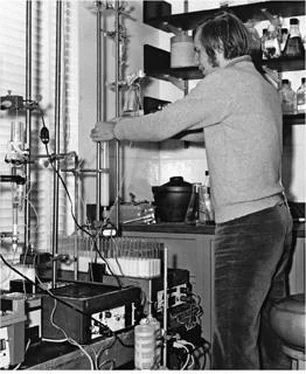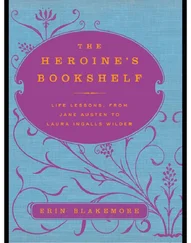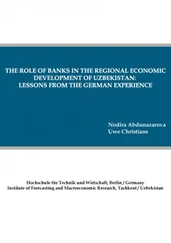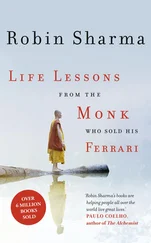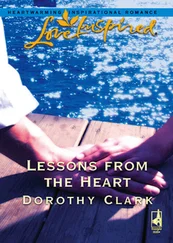James Watson - AVOID BORING PEOPLE - Lessons from a Life in Science
Здесь есть возможность читать онлайн «James Watson - AVOID BORING PEOPLE - Lessons from a Life in Science» весь текст электронной книги совершенно бесплатно (целиком полную версию без сокращений). В некоторых случаях можно слушать аудио, скачать через торрент в формате fb2 и присутствует краткое содержание. Жанр: Биографии и Мемуары. Описание произведения, (предисловие) а так же отзывы посетителей доступны на портале библиотеки ЛибКат.
- Название:AVOID BORING PEOPLE: Lessons from a Life in Science
- Автор:
- Жанр:
- Год:неизвестен
- ISBN:нет данных
- Рейтинг книги:5 / 5. Голосов: 1
-
Избранное:Добавить в избранное
- Отзывы:
-
Ваша оценка:
- 100
- 1
- 2
- 3
- 4
- 5
AVOID BORING PEOPLE: Lessons from a Life in Science: краткое содержание, описание и аннотация
Предлагаем к чтению аннотацию, описание, краткое содержание или предисловие (зависит от того, что написал сам автор книги «AVOID BORING PEOPLE: Lessons from a Life in Science»). Если вы не нашли необходимую информацию о книге — напишите в комментариях, мы постараемся отыскать её.
AVOID BORING PEOPLE: Lessons from a Life in Science — читать онлайн бесплатно полную книгу (весь текст) целиком
Ниже представлен текст книги, разбитый по страницам. Система сохранения места последней прочитанной страницы, позволяет с удобством читать онлайн бесплатно книгу «AVOID BORING PEOPLE: Lessons from a Life in Science», без необходимости каждый раз заново искать на чём Вы остановились. Поставьте закладку, и сможете в любой момент перейти на страницу, на которой закончили чтение.
Интервал:
Закладка:
Salvador Luria(1912-1991)—He moved in 1959 from the University of Illinois to the Biology Department of MIT. In 1972, he was asked to plan the new Center for Cancer Research, an endeavor that involved remodeling a former chocolate factory into a laboratory building. He was its director from its opening in 1973 until 1985. In 1969 he shared the Nobel Prize in Physiology or Medicine with Max Delbrück and Alfred Hershey.
Ole Maaloe(1915-1988)—He moved from the State Serum Institute to the University of Copenhagen's Department of Microbiology, where he remained until his retirement.
Tom Maniatis(b. 1943)—He is currently the Thomas H. Lee Professor of Molecular and Cellular Biology at Harvard University, where his lab has in recent years focused on the regulation of eukaryotic gene expression, particularly in the immune response. In 1982 he co-founded, with Mark Ptashne, the biotech company Genetics Institute, now part of Wyeth Pharmaceuticals, and more recently Acceleron Pharma.
Ernst Mayr(1904-2005)—In 1975 he retired from the Harvard University faculty under the title Alexander Agassiz Professor of Zoology Emeritus. He went on to publish some two hundred articles and fourteen books between his official retirement and his death at the age of 100.
Barbara McClintock(1902-1992)—She became the sole recipient of the 1983 Nobel Prize in Physiology or Medicine, awarded for her work at Cold Spring Harbor Laboratory on the transposition of maize genes. Though she formally retired from the Carnegie Institution's Department of Genetics in
1967, she remained an important presence at the laboratory until her death at Huntington Hospital, near Cold Spring Harbor, at the age of ninety.Matt Meselson(b. 1930)—He is currently the Thomas Dudley Cabot Professor of the Natural Sciences at Harvard University. Since the 1960s he has been highly involved in chemical and biological weapons and arms control, and is now director of the Harvard Sussex Program and Chair for CBW studies at the Belfer Center for Science and International Affairs at the Kennedy School of Government at Harvard.
Avrion (Av) Mitchison(b. 1928)—In 1970, he left Mill Hill to become professor of zoology at University College, London, continuing to focus on immunology. Following his retirement from UCL, he worked for several years in Berlin before returning to London.
Naomi (Nou) Mitchison(1897-1999)—She continued to write well into her eighties, and died at Carradale, in western Scotland, at the age of 101. By then her life had been seriously compromised by Alzheimer's disease.
Jacques Monod(1910-1976)—He shared the 1965 Nobel Prize in Physiology or Medicine with André Lwoff and Francois Jacob. His book-length essay Chance and Necessity, explaining life and evolution as a result of chance, was first published in 1970. Though he held positions at the University of Paris, Collège de France, and the Salk Institute, he centered his career at the Institut Pasteur, serving as its director from 1971 until his death of leukemia at his home in Cannes, France, at the age of sixty-six.
H. J. Muller(1890-1967)—He continued working with Drosophila at Indiana University for the remainder of his career.
Benno Müller-Hill(b. 1933)—In 1968, two years after isolating the lactose repressor with Wally Gilbert, he became a professor at the Institute for Genetics of the University of Cologne. In 1984, he published his revealing description of German eugenics, Todliche Wissenschaft, which sold fifteen thousand copies in Germany but received only one review in the German press. In 1988 its English translation, Murderous Science: Elimination by Scientific Selection of Jews, Gypsies, and Others in Germany, 1933-1945, was published by Oxford University Press, with a later 1998 edition published by Cold Spring Harbor Laboratory Press.
Betty (Watson) Myers(1930-1999)—She continued to live in Washington upon her husband Robert Myers's leaving government service to become publisher of The Washingtonian. In 1980 they moved to New York City, where he
became president of the Carnegie Council on Religion and International Affairs, and they resided there until 1996, when they moved to Menlo Park, California, to be close to their daughters.Masayasu Nomura(b. 1927)—In 1984, after twenty years on the faculty at the University of Wisconsin, Madison, he moved to the University of California, Irvine, where he still runs an active research group that studies RNA synthesis in the yeast Saccharomyces cerevisiae.
Aaron Novick(1919-2000)—He moved from the University of Chicago to the University of Oregon in 1959 to become the founding director of its Institute of Molecular Biology. At Oregon, he went on to serve as dean of the Graduate School and head of the Biology Department.
Linus Pauling(1901-1994)—He left Caltech shortly after winning the 1962 Nobel Peace Prize for his activism against nuclear testing and proliferation. He spent the next decade at the Center for the Study of Democratic Institutions in Santa Barbara, California (1963-1967); the University of California, San Diego (1967-1969); and Stanford University (1969-1974). In 1973 he founded the Linus Pauling Institute of Science and Medicine in Palo Alto, California, where he conducted research on the effects of common micro nutrients on human health. He died of cancer at his ranch in Big Sur, California.
Peter Pauling(b. 1931-2003)—He was a lecturer in physical chemistry at University College London from 1958 to 1989. After his retirement he lived in Wales until his death.
Max Perutz(1914-2002)—He served as chairman of the MRC Laboratory of Molecular Biology at Cambridge University from its inception in 1962 until 1979, the year he officially retired. He continued to work at the Laboratory practically every day after his retirement until his death of cancer at the age of eighty-seven. Increasingly he was celebrated as a skilled writer, publishing many articles in The New York Review of Books. Collections of his essays were also published in book form: Is Science Necessary? (Oxford University Press, 1991) and I Wish I'd Made You Angry Earlier (Cold Spring Harbor Laboratory Press, 1998 and 2003).
Ulf Pettersson(b. 1942)—He is currently vice rector of the Disciplinary Domain for Medicine and Pharmacy and professor in the Department of Genetics and Pathology at Uppsala University in Sweden.
Princess Christina(b. 1943)—She married Tord Gösta Magnuson in 1974 and became known as Princess Christina, Mrs. Magnuson. She currently lives in Stockholm.Mark Ptashne(b. 1940)—After isolating the lambda phage repressor in 1967, his continued research yielded a detailed picture of genetic regulation in lambda. More recently he has focused on transcriptional regulation in yeast. In 1997, he moved to the Memorial Sloan-Kettering Cancer Center in New York City, where he is currently the Ludwig Chair of Molecular Biology.
Edward Pulling(1898-1991)—He continued to live at Redcote after the death of his wife, Lucy, in 1979, remaining as chairman of the Long Island Biological Association until early 1986. Afterward, he took much pleasure from writing about earlier years in his life.
Nathan Pusey(1907-2001)—After retiring early from Harvard in 1971, he moved to New York City to serve for several years as president of the Andrew W. Mellon Foundation.
J. T. (Sir John) Randall(1905-1984)—In 1970 he retired as the first director of the Biophysics unit at King's College, London, which was soon to be renamed the Randall Institute and is now the Randall Division of Cell and Molecular Biophysics.
Читать дальшеИнтервал:
Закладка:
Похожие книги на «AVOID BORING PEOPLE: Lessons from a Life in Science»
Представляем Вашему вниманию похожие книги на «AVOID BORING PEOPLE: Lessons from a Life in Science» списком для выбора. Мы отобрали схожую по названию и смыслу литературу в надежде предоставить читателям больше вариантов отыскать новые, интересные, ещё непрочитанные произведения.
Обсуждение, отзывы о книге «AVOID BORING PEOPLE: Lessons from a Life in Science» и просто собственные мнения читателей. Оставьте ваши комментарии, напишите, что Вы думаете о произведении, его смысле или главных героях. Укажите что конкретно понравилось, а что нет, и почему Вы так считаете.
